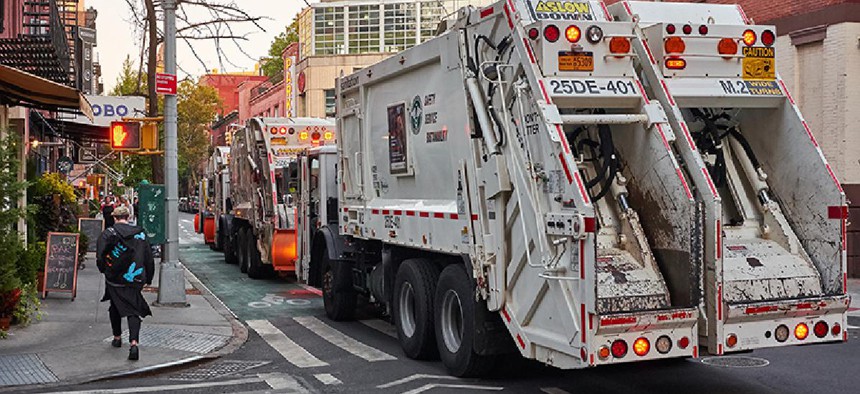Two city councilmen are trying to dethrone North Brooklyn as the king of trash.
After the Fresh Kills landfill on Staten Island reached capacity well over a decade ago, Brooklyn’s Community District 1 has handled the largest share – 34 percent – of the solid waste delivered to waste transfer stations, where trucks then haul the garbage off to landfills outside of the city. City Council Sanitation Committee Chairman Antonio Reynoso, who represents parts of that North Brooklyn district, said the city is addressing the concentration of trash transfer stations by advancing a 2006-era plan to ship out garbage through marine transfer stations.
Nonetheless, Reynoso and Councilman Stephen Levin, who also represents North Brooklyn, are pushing legislation to ensure Brooklyn Community District 1 and three other districts with a disproportionately large share of waste transfer stations do not see increased truck traffic and pollution in the event of a major trash industry upset.
“We have 40,000 tons of capacity in the City of New York, of which no more than 20,000 ever gets used,” Reynoso said. “What we’re saying is, why don’t we just cut all this unused capacity? So, should another Fresh Kills situation happen, we’re going to have to look for alternative means to handle that trash that is outside of these three already overburdened districts.”

Initially, Sanitation Commissioner Kathryn Garcia opposed Reynoso’s and Levin’s legislation, saying the proposed daily 23,000-ton reduction of permitted trash processing could “severely jeopardize and potentially cripple the city’s ability to manage its waste safely and expediently.”
Since then, the councilmen have revamped their bill. It now aims to halve the amount of permitted trash handled in Brooklyn Community District 1, Queens Community District 12 in Jamaica and Community Districts 1 and 2 in the South Bronx. But when calculating stations’ new permitted capacity, the city would not count all of a station’s recyclable material, trash taken out by rail and construction and demolition debris in an effort to encourage more sustainable practices and affordable housing construction.
RELATED: 25 Brooklyn influencers you need to know
Reynoso said he expects the city to undertake an environmental assessment of the matter, which could take up to nine months. Still, he wants to pass the bill by the end of the year. So he has been promoting the legislation to hesitant colleagues, such as the Bronx Council delegation, which apparently withdrew its support for the bill due to concerns about job losses in the South Bronx. The delegation is likely to sign on to the bill again, according to Reynoso.
“Should a company lose tonnage – let’s say they lose 200 or 300 tons because of a cut to capacity – that trash still has to get taken somewhere. If it takes 10 people to move 300 tons of trash, another company is still going to need the 10 workers. … So worst case scenario is displaced jobs, not loss of jobs,” Reynoso said. “The effect on jobs is almost none, inconsequential … but even if there was (more of a consequence), we’re talking about environmental justice. We’re talking about giving people’s health back.”
Return to the 5 projects borough leaders want to tackle next.
NEXT STORY: Legalizing basement apartments


